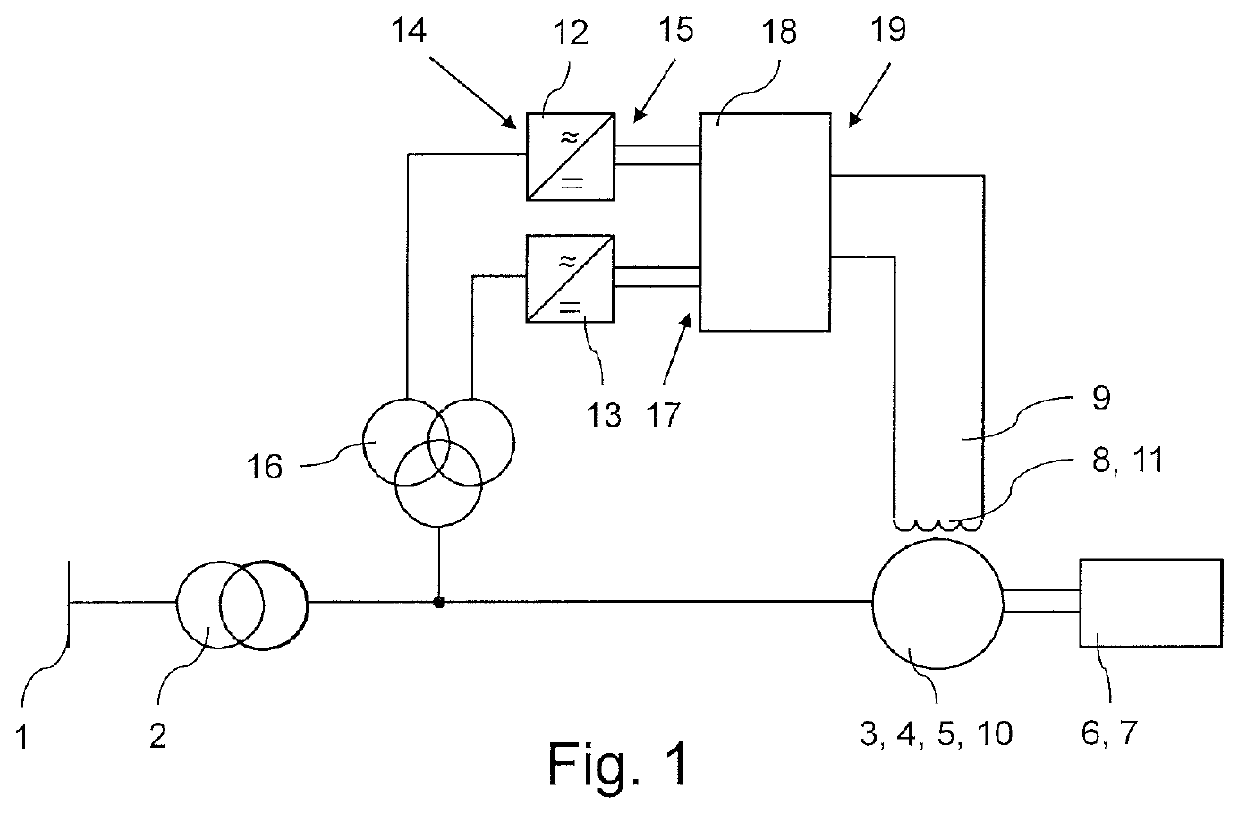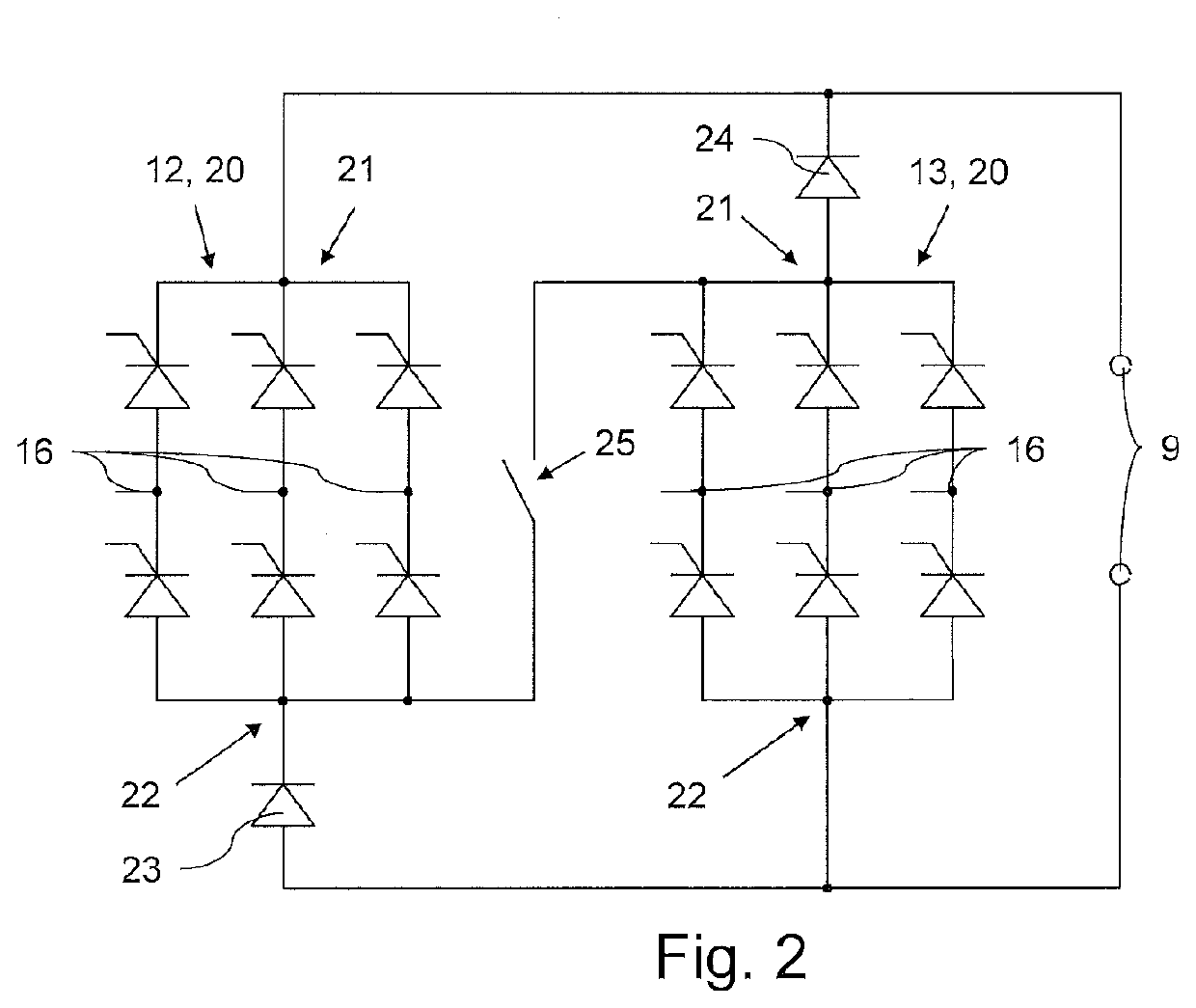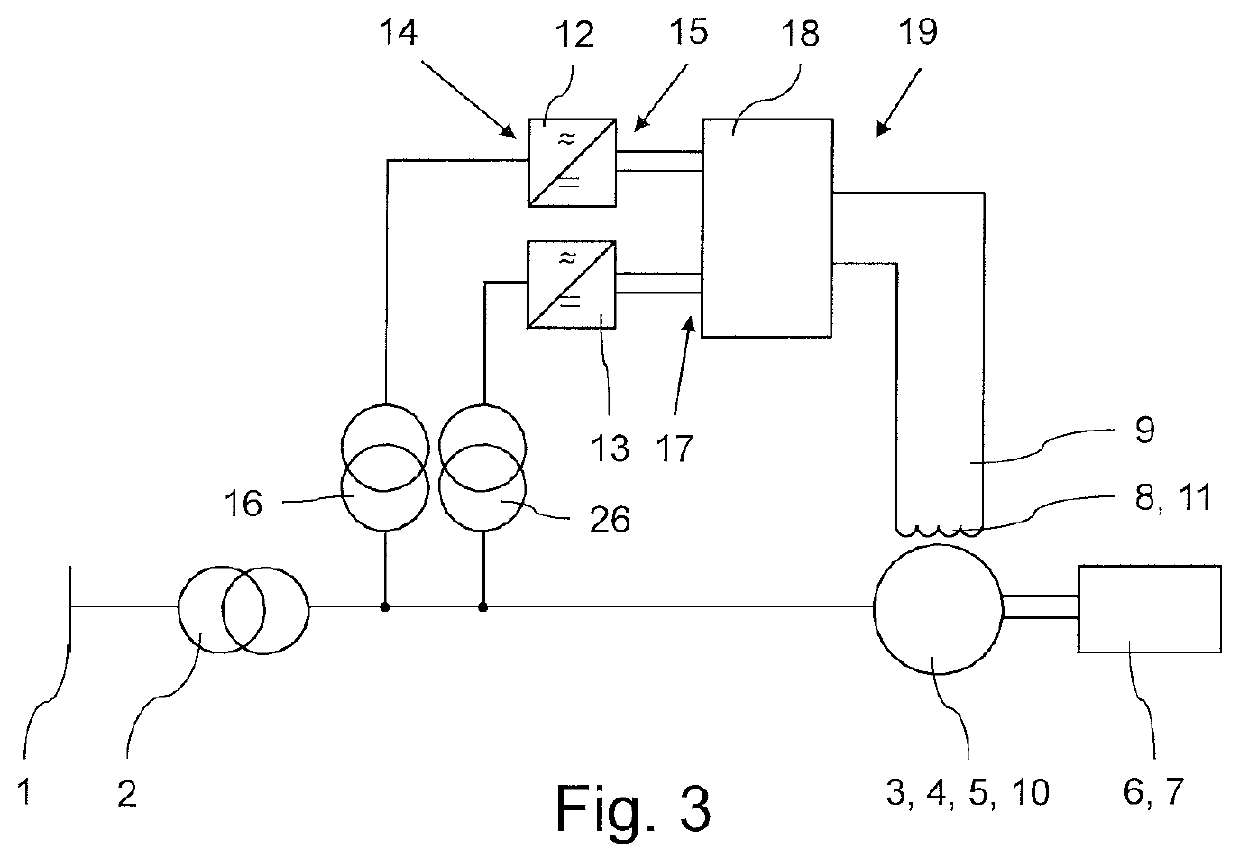Power generation system technical field
a power generation system and power generation technology, applied in the direction of electric generator control, machines/engines, mechanical equipment, etc., can solve the problems of large voltage drop at the terminal, large ripple on the grid, power drop at the output terminal, etc., to increase the voltage available to the exciter, reduce the cost and space requirements, and reduce the effect of cos
- Summary
- Abstract
- Description
- Claims
- Application Information
AI Technical Summary
Benefits of technology
Problems solved by technology
Method used
Image
Examples
Embodiment Construction
[0037]FIG. 1, FIGS. 3 and 4 each show a power generation system according to preferred embodiments of the invention in schematic views. An AC power grid 1 is connected via a step-up power transformer 2 to a synchronous generator 3. The generator 3 comprises a rotor 4, a stator 5 and a primary mover 6, which rotates the rotor 4. The step-down transformer 2 is connected to the stator 4. A governor 7 is provided for controlling mechanical power of the primary mover 6. The generator 3 further comprises a field winding 8, which can be fed with DC power by an exciter 9 for exciting the generator 3. Alternatively or in addition the generator 3 comprises a main machine 10 and the exciter 9 comprises a field wound or brushless rotor 11 for exciting the main machine 10.
[0038]A first rectifier 12 and a second rectifier 13 are provided each having an AC side 14 and DC side 15. The AC side 14 of the first rectifier 12 and of the second rectifier 13 are connected via a first step-down transformer...
PUM
 Login to View More
Login to View More Abstract
Description
Claims
Application Information
 Login to View More
Login to View More - R&D
- Intellectual Property
- Life Sciences
- Materials
- Tech Scout
- Unparalleled Data Quality
- Higher Quality Content
- 60% Fewer Hallucinations
Browse by: Latest US Patents, China's latest patents, Technical Efficacy Thesaurus, Application Domain, Technology Topic, Popular Technical Reports.
© 2025 PatSnap. All rights reserved.Legal|Privacy policy|Modern Slavery Act Transparency Statement|Sitemap|About US| Contact US: help@patsnap.com



